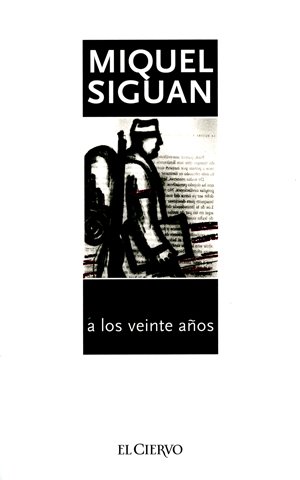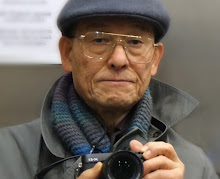フジX-E1とフジノンXF14mm広角レンズで撮った、スペイン・ロマネスク教会
(Photos of Romanesque churches of Spain by Fujifilm X-E1 with Fujinon X 14mm(f2.8) lens)
Fujinon XF 14mm f2.8R wide angle lens
(For the summary in English please see the end of this article.)
Photo(1) Fujinon XF 14mm(f2.8)wide angle lens on X-E1 body
Photo(2) XF 14mm f2.8 lens
Photo(3) XF 14mm on X-E1
FujifilmのXF 14mm(f
2.8)については、「欠点の少ないとても魅力的なレンズ」など、好意的なコメントが目に付きます。すでにかなりのReviewが出まわっているので、技術的な面を含む詳しい評価は、ほかの記事をご覧いただくことにして、Fujifilm Xシリーズを携え、最近スペインのロマネスク教会を訪ね歩いたユーザーとして、いくつかの作例をまじえながら、私の感想を述べてみようと思います。
Fujifilm のレンズ交換式デジタルカメラXE-1を使えば、たとえ暗い教会内であっても、ISO6400でBlog用に充分な写真が撮れる、というのが昨年末トロントのダウンタウンにある英国国教会で試した結果でした。(詳しくは2012年12月31日付けBlog記事、『Fujifilm
X-E1を使って教会を撮る』をご参照ください。( http://surdepirineos.blogspot.ca/search?updated-min=2012-01-01T00:00:00-05:00&updated-max=2013-01-01T00:00:00-05:00&max-results=6 )
そしてそのとき使用したkitのXF18/55mmズームレンズは、手ブレ防止付きのとても使いやすいレンズですが、35mm換算の27-83mmでは、ふつう町の中心街にあり、回りが建て込んでいるロマネスク教会を撮るには、広角側が不足するという問題がありました。そうは言っても、Fujinon XFレンズ群のうちすぐ手に入りそうなのは、35mm換算で21mm 相当のXF
14mm(f2.8)しかありません。
しかも、この数年間で手ブレ防止付きのキャノン製ズームレンズに馴れきってしまった私に、果たして手ブレ防止なしの21mm相当の単焦点レンズが使いこなせるか、ちょっと迷いがありました。しかしReviewも読みいろいろ検討した結果、レンズはXF18/55mmズームとXF14mm、そしてボディーはX-E1を2台、という組み合わせで旅に出ることに決めました。
スペインでは、コントラストの強い屋外や、うす暗がりの教会内など、いろいろな場面でXF14mm を使いましたが、X-E1のボディー(350gr)と XF14mm(235gr)の組み合わせは合計で600grと、これまで使ってきたCanonDSLRに比べると半分以下の重さなので、2台持っても疲れないこと、またレンズの解像度が高く、しかも色合いのよい写真が撮れることに感服しました。
それとXF18/55 とXF14mmはフィルター口径がいずれも58mm、レンズフードも同じなので、フードの使いまわしがきくのも便利です。バッテリーや充電器がそのいい例ですが、機器の互換性があるとその分だけ手荷物が減って助かるため、長旅用の機材を選ぶ際には、使いまわしが効くかどうかは大事なポイントになります。
XF14mmは、オートフォーカスは正確だし、マニュアルフォーカスもなめらかで、完成度の高い広角レンズだと思います。ただし、絞り調節はもうすこし固めであって欲しいところです。これはX-E1の露出補正ダイアルがくるくる回りすぎるのも同様で、夢中でシャッターを押している内に設定が変わり、あとで悔しい思いをしたという経験は、私だけではなさそうです。
Fujinon XF 14mm(f 2.8)で撮ったロマネスク教会
Liébana
Photo(4) Liébana(view from the monastery of Santo Toribio of 8th century) ISO 400, f.8(1-640)
(All photos are of JPEG as they came out of the camera. File size is reduced for Blog use. Some trimming may be applied)
スペイン北部の山中リエバナにある、有名なサント・トリビオ修道院から眺めた風景。(以下の写真は全て、JPEGでカメラから取り出したままの画像を、Blog用にファイルサイズを縮めたもの。但し一部に若干のトリミングをほどこした例あり)
XF14mmはRAWで「周辺光量落ち」が目立つ、と指摘しているReviewがありました。しかし私はもっぱらJPEG撮りなので、この問題はカメラが自動補正をしてくれるため、ふだんは気にも留めないで過ごしています。
このLiébanaの風景では、左右の上隅の雲のあたりにすこし光量落ちが認められますが、これは千枚以上の写真の中で一枚だけ私の目にとまったもので、JPEGで撮っているかぎり、周辺光量落ちはあまり気になりません。
Saint Michel de Cuxa
.jpg)
Photo(5) Saint Michel de Cuxa(entire view of the
monastery) ISO400, f14(1/200)
写真(5)は10世紀のカタルーニャ・プレロマネスクを代表する、サン・ミシェル・ド・クシャ大僧院の全景です。
サン・ミシェル・ド・クシャは「フランス・ロマネスク」ではないのか、というご指摘があろうかと思いますので、なぜ「スペイン・ロマネスク」のBlog記事に含めるのか、その背景を補足しておきます。
フランス側のピレネー東部は、中世にはカタルーニャ領でした。いまでもカタルーニャの人たちは、地中海沿岸のペルピニャンあたりから内陸に広がるピレネー沿いの一帯を、「北カタルーニャ」と呼んでいます。11-12世紀のロマネスク時代には、現在のフランスとスペインにまたがる「カタルーニャ」という ''国'' があった歴史を踏まえ、「スペイン・ロマネスク」の関連で取り上げている次第です。
ところで、Fujinon XF
14mmは歪曲がほぼゼロ、というたいへん優れた評価になっています。もっともそれは平面のチャートを撮ったときの話で、実際に現場で写真を撮ってみれば、どんな優秀な広角レンズでも周辺像は大なり小なり歪んで写るはずです。ただその歪みが、質のよくないレンズだと焼きイカのように丸くなってしまうところ、XF14mmの場合は多少歪みがあっても気にならない、いわば上品に歪むという違いを感じます。
Photo(6)
Saint Michel de Cuxa
(Cloister)ISO500, f8(1/250)
これまで、回廊の広々とした雰囲気を一枚の写真におさめるのに苦労してきましたが、今回はFull frameで21mmの広角レンズに相当するFujinon XF
14mmの使い勝手のよさを、痛感した次第です。
Photo(7) Saint Michel de Cuxa(interior) ISO6400,
f2.8(1/60)
教会内ではフラッシュも三脚も使えないのがふつうなので、高感度に強いXE-1とf2.8が使えるXF14mmは、とても便利な組み合わせでした。
Sainte Marie de Serrabone
Photo(8) Sainte Marie de
Serrabone(triumphal arch) ISO6400, f4(1/160)
クシャに近い、セラボンヌ(善き山)にある12世紀の聖母修道院教会は、見事な大理石の彫刻で飾られた凱旋門形のアーチで知られています。狭い教会内では、とくにXF14mmをよく使いました。
Photo(9) Serrabone(capital of triumphal
arch) 100% blow up of original JPEG file.
これはPhoto(8)の縮小前のオリジナルJPEGファイルを100%拡大し、柱頭彫刻の部分を切り取ったものです。
Sainte
Marie d'Arles sur Tech
Photo(10) Sainte Marie d'Arles sur Tech(entrance)
ISO200, f9 (1/500)
アルル・シュール・テックの聖母修道院教会は、「北カタルーニャ」に点在する古い歴史を持つ教会群のひとつです。教会入り口の扉の上、タンパン(tympanum)に刻まれたキリスト像は、11世紀の初期ロマネスクの作品として有名です。
Photo(11)
Arles sur Tech(tympanum)
100% blow up of original JPEG file.
タンパンに刻んであるキリスト像の部分を100%拡大したものですが、このレンズの解像度は、なかなかのものです。
Sant
Pere de Rodes
Photo(13) Santa Helena
ISO320, f7.1(1/1000)
サンタ・エレナは、Sant Pere de
Rodes修道院のすぐそばの丘に建つ、10世紀ころのプレロマネスク礼拝堂です。これも廃墟でしたが、久しぶりに訪ねてみたらずいぶん修復の手が入っていて、これは賛否の分かれるところでしょうが、見違えるほど整った姿になっていました。手前に見えるのは集落跡です。
広がりのある風景や、空の青さが実に美しい色で仕上がってくるのが、X-E1とXF14mmの組み合わせの強みです。
私のこれまでのBlogの写真は、そのほとんどがCanon5D(full
frame), 50D(APS-C), T3i(Kiss X5)のボディーと、EF 24-104 4L, EFs 15-85mm(f3.5-5.6)のレンズの組み合わせで撮ったものです。
今回XF14mmを使ってみて、Canonのズームレンズとはひとあじ違う写真が撮れたような気がします。抜けるように青い空の色、光と影のコントラストが強烈なスペインの風景、大教会の回廊の広がり、薄暗がりの祭壇、などなど。
Fujifilm Xシリーズに切り替えてから半年、シャッターを押すだけでそれなりの写真が撮れた、便利なキャノン・カメラ時代に比べると、ミスショットも増えました。このカメラを使いこなせる域に達するのは、まだまだ先の話という感じです。それでもDSLRにもどる気がまったく起きないのは、Fuji Xシリーズが小型で軽いことと、解像度や発色のすばらしさに惹かれているからにほかなりません。
Fujiの開発担当者の言葉に「他社はカメラをつくるが、私たちは色をつくる」というのがありました。Xシリーズを使ってみて、それが単なる宣伝文句でないことを実感しています。写真を撮ることの好きな若い技術者たちが、いつまでも存分に力を振るえるカメラメーカーであり続けて欲しい、と願っています。
(Summary
in English)
Photos of Romanesque churches of Spain by Fujinon XF
14mm(f2.8) wide angle lens
''The
Fujinon XF 14mm f2.8 R is a highly attractive ultra-wide lens with few
shortcomings'' is the verdict by Photozone
Since
other extensive reviews of Fujinon XF14mm lens(21mm on 35 mm film basis) are available on line such as dpreview, ephotozine etc, I'll report on my
experience, not the technical review, of using Fujinon XF 14mm during the last
trip in Spain taking pictures of Romanesque churches for my blog.
I've
travelled with 2 bodies of Fujifilm X-E1 equipped with Fujinon XF
lenses(XF18-55mm zoom and XF14mm wide angle). All photos in this article are of
JPEG images as they came out of the camera. The file size is reduced for Blog
use and some trimming may be applied.
Photo(4) Liébana(view from the monastery of Santo Toribio of 8th
century)
The
reviewers mention the light fall-off with XF 14mm, especially in RAW files.
I normally
shoot JPEG and light fall-off, if any, will automatically be corrected within
the camera, consequently for me it's not an issue. Slight light fall-off is
noticed at the upper corners of this image. It's one of the rare examples
I've had.
Photo(5) Monastery of Saint Michel de Cuxa(entire
view)
During
the Medieval time French East Pyrenees(Pyrénées-Oriental) used to be part of
Catalonia. It was ceded to France by Spain through the Treaty of Pyrenees
signed in 1659. However, people of Catalonia still call it '' Catalunya
Nord(Northern Catalonia)''.
Monastery
of Saint Michel de Cuxa represents 10th century Catalan Pre-Romanesque style.
Fujinon
XF 14mm is rated by most of the reviewers as a zero distortion lens. It means
free of distortion on a chart. However, in a real world any super quality lens
could hardly produce distortion free images. The point is that the Fujinon XF
14mm lens produces very pleasing images even with slight distortion around the
edges.
Photo(6) Cloister of monastery of Cuxa
21mm
wide angle lens is ideal to capture an extended view of the cloister.
Photo(7) Interior of the church(Cuxa)
IS6400 at f2.8(1/60).
The
XE-1 and XF14mm combination responded very well under low light situation.
Photo(8) Sainte Marie de Serrabone(triumphal
arch) ISO6400, f4(1/160)
Sainte
Marie de Serrabone is a 12th century Romanesque church located near Cuxa.
Another example of low light photography.
Photo(9)The 100% blow up photo(8) proves the
outstanding resolution power of XF 14mm lens. The same applies to the
Photo(11)
Photo(10) Monastery of Sainte Marie d'Arles sur
Tech(entrance) ISO200, f9, 1/500
Sainte
Marie d'Arles sur Tech is one of the old churches in ''Northern Catalonia''.
It is known for its tympanum with the figure of Jesus which is the work of
early 11th century.
Photo(12) Monastery of Sant Pere de Rodes
Sant
Pere de Rodes is on the Spanish side of Catalonia. It is very unique example of
the 11th century early Romanesque style architecture in Catalonia.
Photo(13) Chapel of Santa Helena
This
10th century Pre-Romanesque chapel is located on a hilltop next to Sant Pere de
Rodes.
Most
of the photos used in the past in my Blog had been taken using Canon DSLR such
as 5D(full frame), 50D(APS-C) and T3i with zoom lenses; EF24-105mm 4L and
EFs15-85mm(3.5-5.6).
Fujifilm
X series equipment(X-E1 with Fujinon XF lenses) is much smaller and lighter,
half the weight compared to the Canon DSLRs which I had been using. For small
size Fuji X equipment produces better color such as truly blue sky, and
sharper image than Canon.
I
have minor gripes with XF lenses such as aperture setting to be more firm and secure. Also X-E1's EV compensation dial moves too easily etc. The
learning curve of Fujifilm X series is steep. It will take time to get used to
the new equipment.
But
I'll not look back.
.jpg)
+Curve,+level(1.1).jpg)

.jpg)
.jpg)
.jpg)
.jpg)
.jpg)
.jpg)
.jpg)
.jpg.jpg)




1 件のコメント:
Heya i am for the primary time here. I came across this board and I in finding It truly useful & it helped me out much. I'm hoping to present one thing again and help others such as you aided me.
コメントを投稿